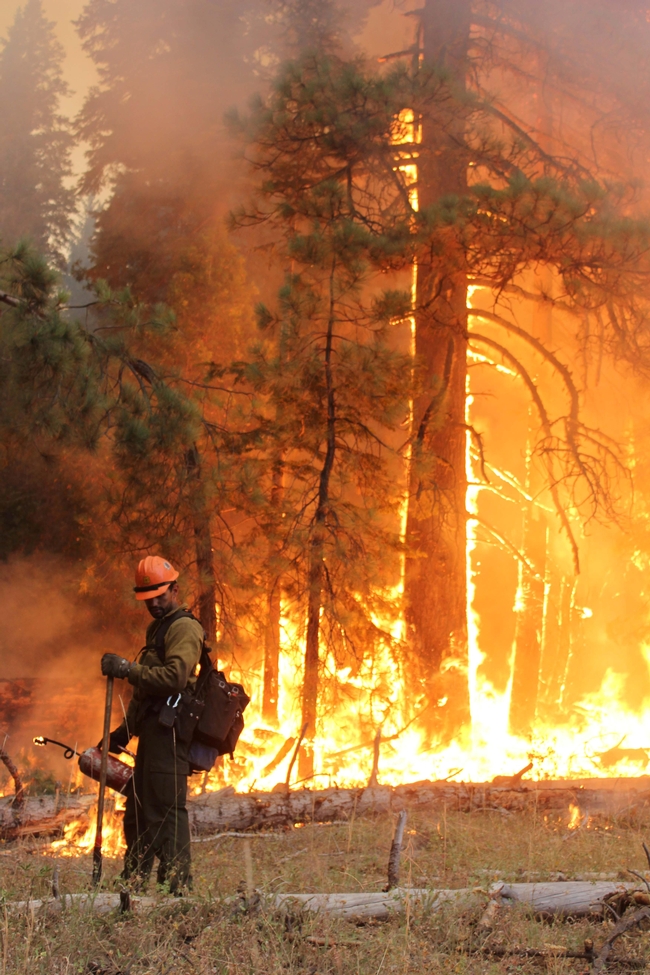From the UC Blogosphere...
Color Them Hungry
As summer nears its end, the honey bees are hungry. That's why Extension apiculturist Eric Mussen of the UC Davis...
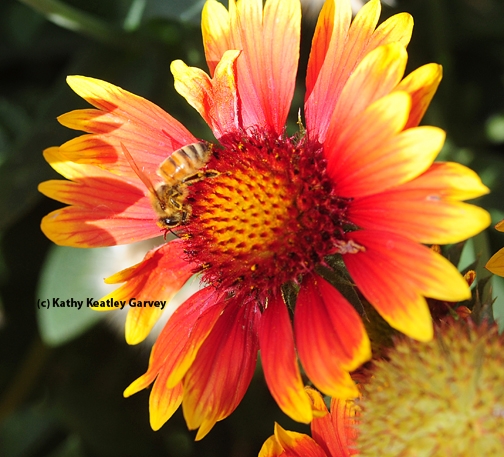
A honey bee foraging on a blanket flower, Gaillardia. (Photo by Kathy Keatley Garvey)
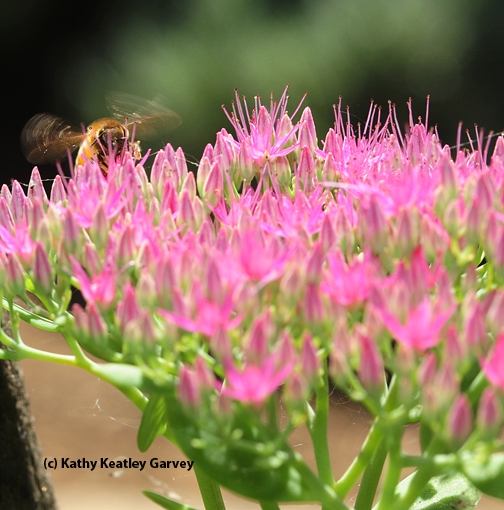
A honey bee on sedum. (Photo by Kathy Keatley Garvey)
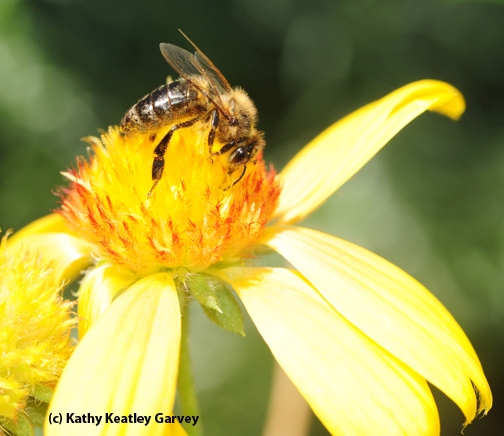
A honey bee on a blanket flower (Gaillardia). (Photo by Kathy Keatley Garvey)
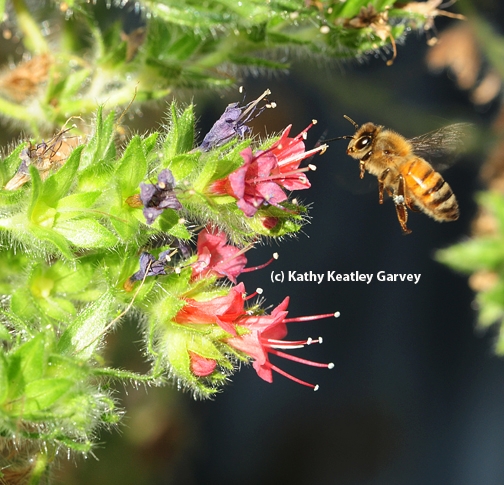
Honey bee heading toward a tower of jewels, Echium wildpretii. (Photo by Kathy Keatley Garvey)
The Rim Fire is a treasure trove of information for fire scientists
The key question, the story said, is what happened on Aug. 22 and 23, when a 200-foot wall of flames burned almost 90,000 acres.
"Almost half of this very, very large fire happened in just two days," said Max Moritz, UC Cooperative Extension specialist in the Department of Environmental Science, Policy and Management at UC Berkeley. "If you are a scientist, that is very interesting."
Leading up to the fire, Scott Stephens, professor in the Department of Environmental Science, Policy and Management at UC Berkeley, was in the area of the Rim Fire with a four-person research team measuring tree diameters and densities. They found as many as 400 trees per acre on the land, compared with 60 and 90 trees per acre in 1911. There was also between 30 and 40 tons of woody debris per acre on the forest floor, compared with 6 to 8 tons 92 years ago, Stephens said.
"We know the last fire in that area was in about 1905. That's 100 years without fire," Stephens said. "If you don't clear trees and brush and do some prescribed burning, you are eventually going to get a very closed forest that is very dense."
The U.S. Forest Service reported today, Sept. 3, that the Rim Fire is 70 percent contained.
Labor Day Travails
Today (Labor Day) began just like any other day. And it ended just like any other day, except for the Labor Day...
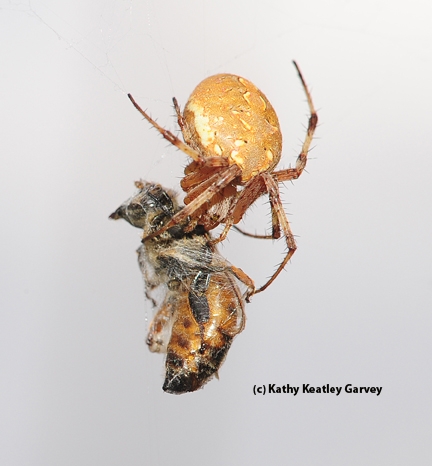
Western spotted orb weaver snares and wraps a honey bee. (Photo by Kathy Keatley Garvey)
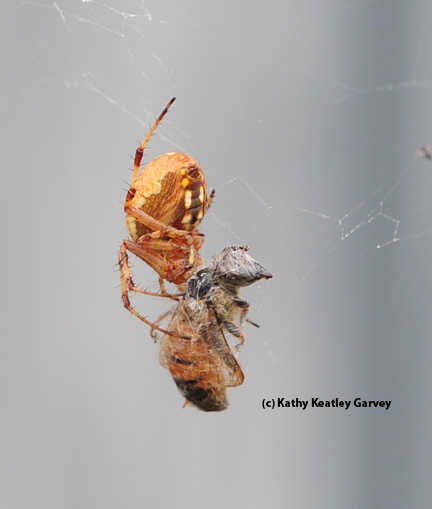
The spider's spots are visible in this photo. (Photo by Kathy Keatley Garvey)
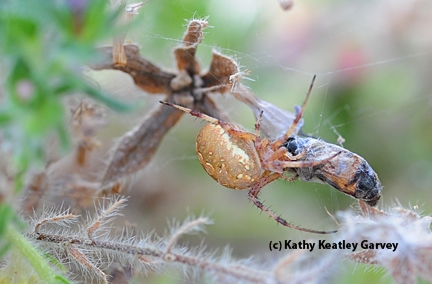
After tugging the honey bee into the tower of jewels, the spider proceeds to eat it. (Photo by Kathy Keatley Garvey)
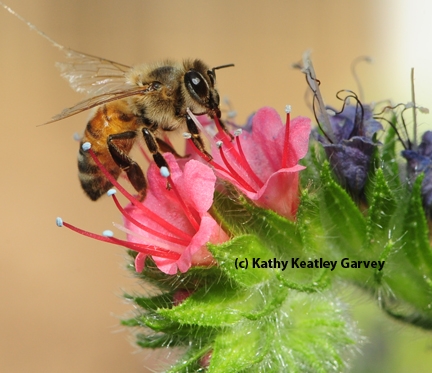
This honey bee narrowly missed being a target of the spider. It is nectaring on a tower of jewels, Echium wildpretii. (Photo by Kathy Keatley Garvey)
Butterfly Gardens
Flying Flowers In Your Garden by Lee Oliphant Master Gardener Q. I’d love to create a...
Why Honey Bees Need Water
Ever seen honey bees foraging for water on your outdoor clothesline? When Extension apiculturist Eric Mussen of the...
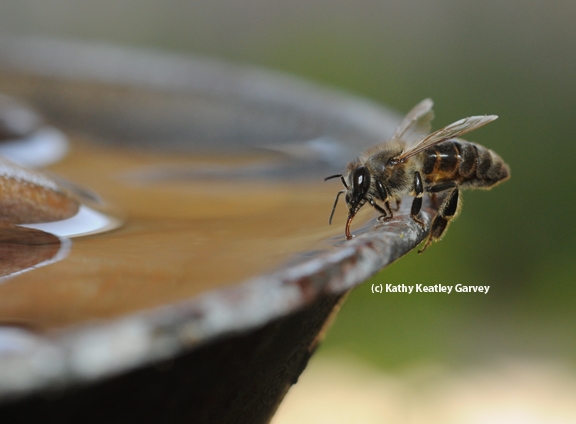
A Carniolan honey bee sipping water from a fountain. (Photo by Kathy Keatley Garvey)
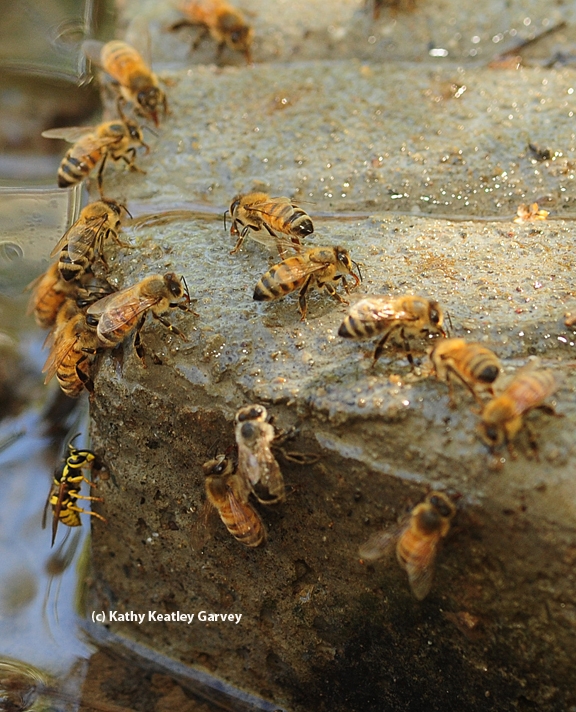
A yellowjacket joins honey bees in seeking water. (Photo by Kathy Keatley Garvey)
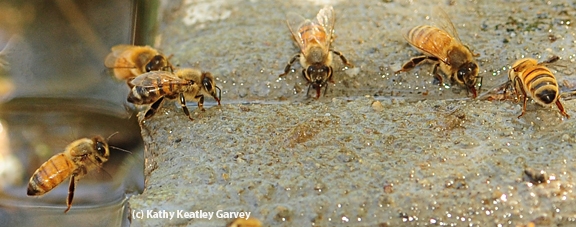
A honey bee, caught in flight, ready to join her sisters in gathering water. (Photo by Kathy Keatley Garvey)



